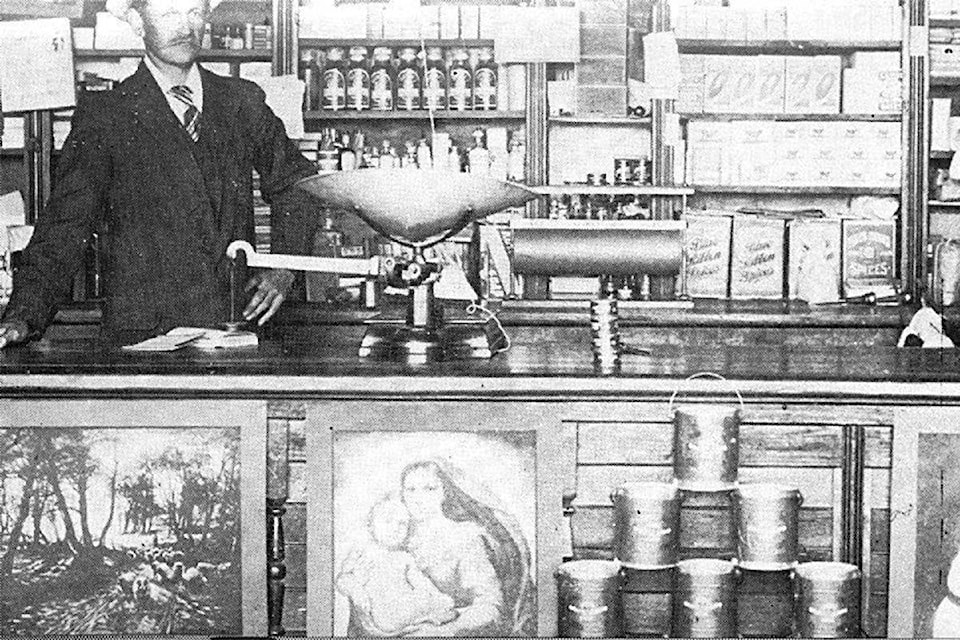By Mike Rainone for the News
Probably the most exciting and influential milestones in the colourful early history of Ponoka and the vast surrounding and rolling rural countryside occurred on July 27, 1891 when the first railway train rumbled into Siding 14 on the new C and E Railway.
Over the next few years the tiny, but rapidly growing Village of Ponoka, would witness and welcome a great influx of new settler families arriving at that busy train station or in the horse drawn wagons or stage coaches that had made the long and dusty trip along the Calgary to Edmonton trail.
While some began the next chapter of their lives in the Ponoka Village, many more would venture out with great anticipation into the vast rural areas to begin to establish their new homesteads, raise their livestock, and clear the rugged but fertile land in preparation of sewing their first crops, while hoping for successes going into a future full of hard work and ongoing challenges, but bravely facing them with a relentless spirit of sheer determination and true grit.
The first district of fair
With that first influx of early pioneers, many of them would settle in the Asker and Fair districts north east of Ponoka, with the latter eventually becoming known as Water Glen. The Fair School, located on the corner of S.E. of 20-43-22-W4th was one of the first country schools in the district, accepting students from the immediate area on May 9, 1899, with the tiny Smith Grove School in the Asker district opening the same year.
When the hardy settlers began to arrive in the Water Glen district as early as 1893 the hardships were many, but although starting from scratch these sturdy and determined folks would always work very hard and endured the challenges together. They found the game, fish, and wild fruit plentiful throughout the area, which helped to fill the larder, and once they got their humble buildings in place and cleared the land, purchased their livestock, and seeded their crops their new ‘adventure on the prairies’ had begun. Peter Bolch, one of the real old-timers along with his brother Norman vividly recalled in the Mecca Glen History book that in the beginning this was a vast and rolling countryside of tall prairie grass and forests without fences, which flourished with hundreds of prairie chickens, bush rabbits, and flowers everywhere, and the wild edible berries were so thick that they could fill many a milk-pail full.
After a year or two the farmers were able to harvest their crops, and with a few sacks full of precious wheat it would be taken to Strathcona to be ground into flour on the grist mill. The three to four day trip was made in the winter, and if the Battle River wasn’t frozen, the crossing was extremely hazardous, with piles of rocks kept on either side of the wagon box to weigh it down so that it wouldn’t tip over or float down stream, while the vital provisions had to be kept dry under the seat. When the flour finally arrived back home Mrs. Bergman kindly offered her oven to her neighbours to bake the bread in, and many would carefully transport the precious pails of raised dough by ‘shanks mare.’ In those very early years in all these quickly growing districts the snow was very deep, with Peter Bolch recollecting that during the winter of 1906-1907 there would often be four feet of snow on the level and that the temperature would hover at 60 below for days, but thankfully the winds were not too bad in those days. Quite often on the way to school they would meet coyotes on the drifted road, but as scared as they may have been of each other, neither could get out of the sleigh track, and would quietly continue on their separate ways.
Doctors were few and far between in those days and for years, and sudden emergencies would require a quick trip into Ponoka, or the physician making the arduous trip out to the farm by horse and buggy or sleigh. Mr. Humphrey acted as the Water Glen District’s only dentist, extracting many a troublesome tooth, with the anesthetic being only a couple of strong men to hold the patient down, and sometimes in all the hustle and struggles the wrong tooth may have been pulled. Among the many milestones in the rapidly growing district was a new school built in 1903 by John Peterson and E.J. Lundy at a cost of $125 plus $35 for materials, with all the lumber being provided by the community, and the logs fashioned at the local mill. The first teachers received a salary of $45 a month, and that popular school would proudly serve hundreds of district children until 1949 when a school bus route was opened up to the Mecca Glen School. To meet the worship needs of the Water Glen District, the Svea Lutheran Church was built in 1899, and would faithfully serve the community for decades from one of the oldest churches between Edmonton and Calgary.
The historical Water Glen Store was opened in 1902-1903 by Mr. Kallman and Mr. C. A. Johnson, who later took over by himself, became the Post Master in 1907 and would operate the busy store and Post Office until 1944. Other activities and other family and social amenities in the district over the years included a Farmer’s Club, The Yeoman Homestead Club, a very competitive Gun Club, as well as countless picnics, and fun games and teams of baseball, football, curling, and much more.
With your kind assistance and photos we will continue to honour our early history and pioneers in our weekly Reflections and Remember When features in the Ponoka News.
